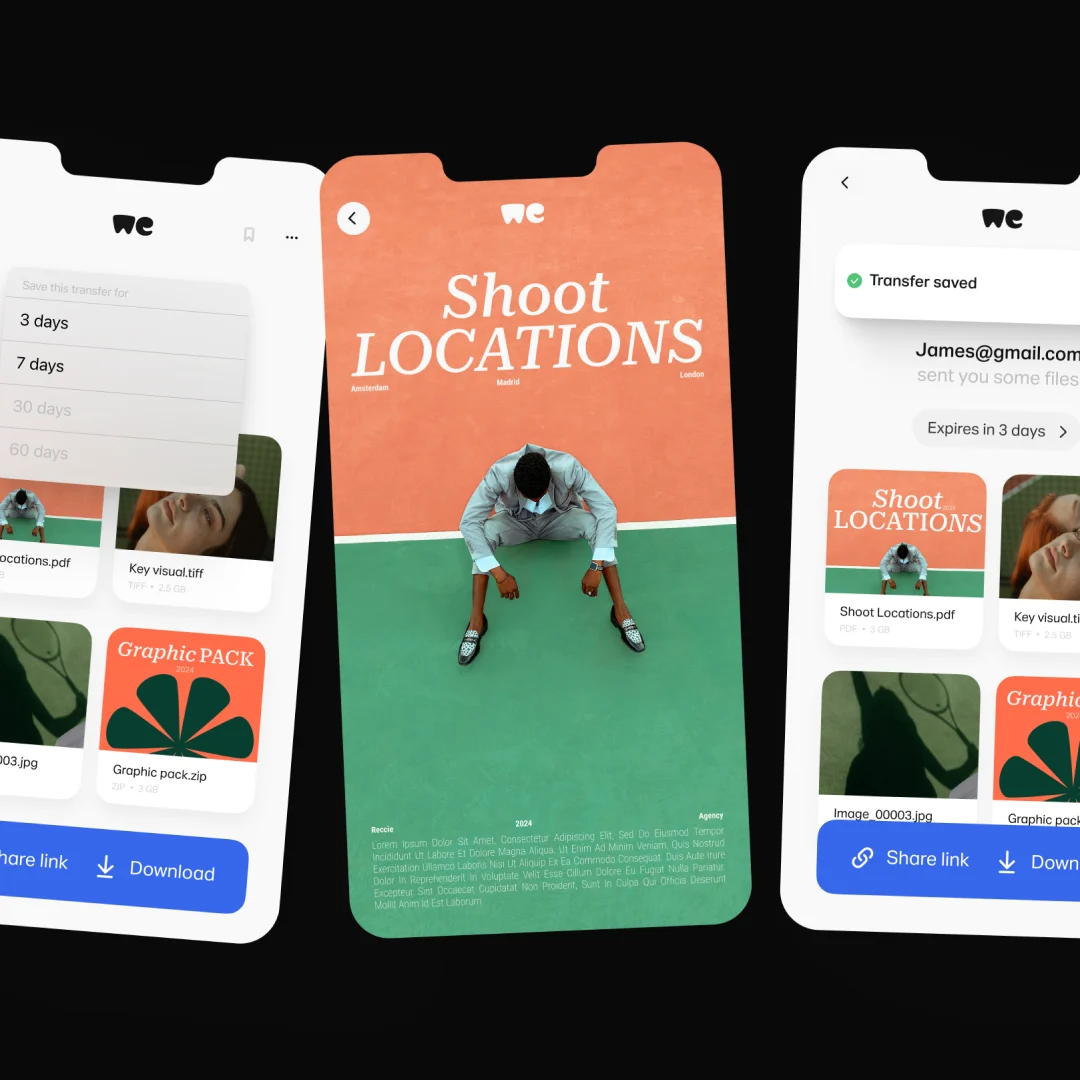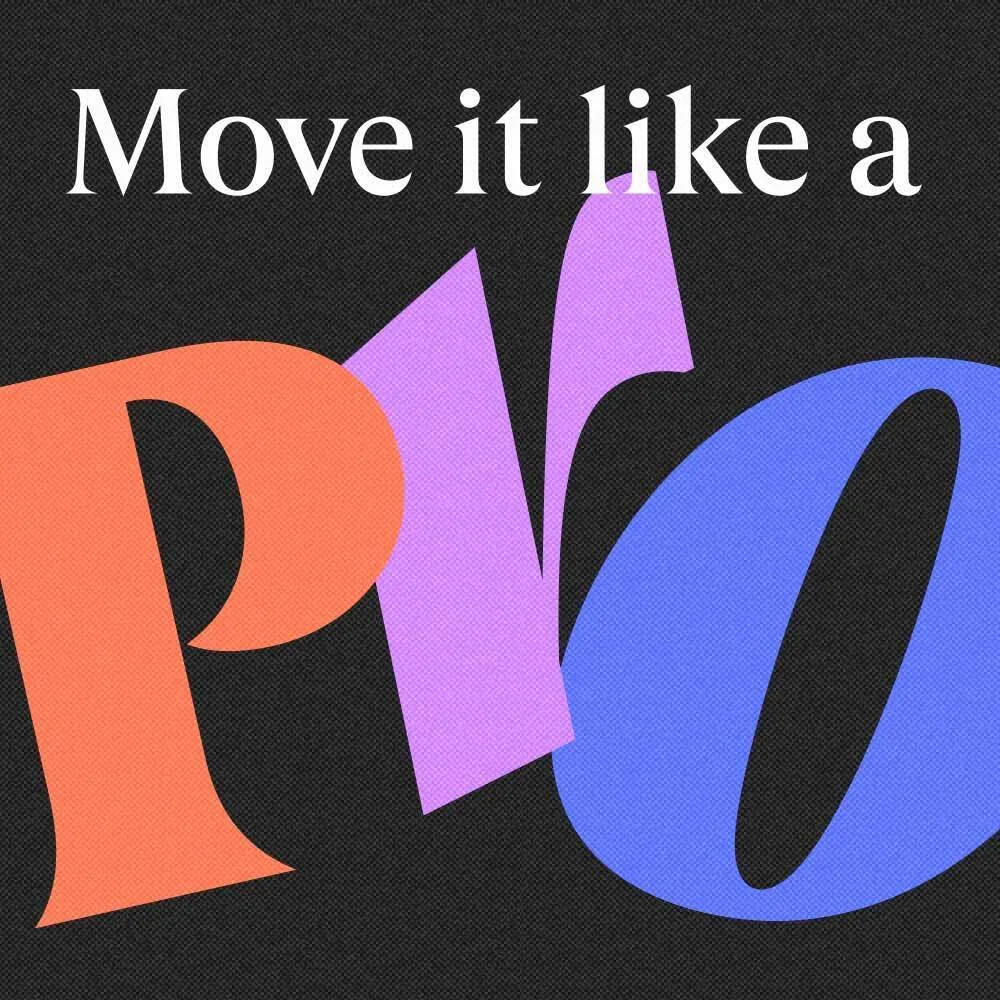Behind the B: Storytelling with WePresent
WePresent features unexpected stories about creativity from all over the world. Here’s how we ensure we’re being as representative, supportive and authentic as possible

Quite often when I look at the numbers that define WeTransfer, it blows my mind. Some 87 million odd people around the world, in 190 countries use WeTransfer every month to send billions of files. Now, I’m no mathematician (right-brainer here!) but I do know that that is what we call a lot. Every one of those millions of people is different, has their own story to tell and their own ideas to put out in the world that are formed based on their own experiences, culture and history. There are no two creatives the same. And that is the beauty of creativity; there is no single template or vision that anyone needs to adhere to. That too is the founding principle of WePresent, WeTransfer’s digital arts and editorial platform. Since the very beginning WePresent has existed to tell unexpected stories about creativity from artists all over the world. We’ve said it once and we’ll say it again: we believe that more voices = better ideas. We want to represent our global WeTransfer network and prove that creativity can (and does) come from anywhere and everywhere. Representation is at the core of what we do. We want to tell stories across different communities – whether that's age, race, geography, gender or sexual orientation.

Challenging ourselves
That can sound like a rather lofty sentiment at best, and performative at worst, so let’s break it down shall we. How do we actually make sure we’re doing this? Firstly, we’re not afraid to challenge ourselves. Each month we hold an editorial curation meeting that comes with set challenges based on countries, trends, types of artists or disciplines that we haven’t yet covered, or are lacking in, and push the team to answer this brief. This forces us as an editorial team to look outside of our own echo chambers and work harder in order to find more representative work. In practice this can mean using Google to translate the art sections of local papers from Ecuador, or getting in contact with a gallery owner in Lesotho, or learning to use social media in new ways. Secondly, when creating these stories, we follow a set of guidelines for ethical storytelling that align with our values as a B Corp and help to govern our journalism. Want a read? You can check out our road to responsibility right here.
After the artists have been featured on WePresent comes our internal analysis. We measure our editorial output each quarter and look at countries and artists featured, gender splits and disciplines covered to ensure that we are publishing work from creatives in different parts of the world, from different cultures and with different perspectives. But it’s not looking simply at the artists themselves—we make sure that those hired to write the stories or draw the illustrations or create the accompanying visuals also understand the nuance of the work and culture surrounding it so that we can tell each story with integrity. It’s not just about who’s in front of the camera, but behind it too. Working in this way, we’ve so far featured more than 1000 different creatives from over 100 different countries. 119 to be exact. At WePresent we want to ensure that our support is more than just a one time thing too. We stay in touch with artists once they’ve been featured, and last year began sending out a quarterly survey asking whether being on WePresent had impacted their careers in a positive way; be it through sales, website traffic or being approached for work. Understanding how a feature can affect a creative’s career in a real time way is important for us as we continue to evaluate how we can meaningfully contribute to an artist’s growth.
Creativity isn't free
And speaking of growth, let’s get real for a moment. It’s very hard to build a career as a creative unless you are actually able to make a living from it. Time after time we’ve seen artists call out brands on social media for asking them to create something new for them and then offering to ‘pay’ them with free promotion. Let’s be very clear here, promotion doesn’t pay the bills. Every time a creative makes something new for us—whether that’s an essay, an illustration, a film or takes a photograph—they are paid. Properly and fairly. So louder for those at the back: Pay artists, their creativity isn’t free.
Sometimes handing the mic to someone else is the most powerful thing you can do as a brand.
There’s also something important I’d like to point out because I don’t want this blogpost to sound like we’re giving ourselves one giant pat on the back. We’re by no means perfect. We make mistakes. We don’t have all the answers. The road to being an editorial platform that stands up for what it believes in, supports artists’ vision and actually does some good once in a while is long and full of unexpected turns, but we want to continue to do the best that we can. At WeTransfer it’s important that we recognize that we’re not always the ones that should be doing the talking, but that we have a website that is viewed and used by millions, and that is a powerful tool to amplify the voices of those that need to be heard. Sometimes handing the mic to someone else is the most powerful thing you can do as a brand. We are constantly striving to be the most representative and supportive platform that we can be, and we’re learning every step of the way. The key takeaway? We are no one without the creatives that we collaborate with, so treat artists with the respect that they deserve. Always. Like this? Read this post about Celebrating B Corp Month by our CEO Gordon Willoughby
Related articles
 Save for now. Get to it later
Save for now. Get to it laterNever stress about expired links again. Discover how WeTransfer's ‘save for later’ feature lets you store and access important files whenever you need them.
 Unleashing our next era of growth, with Bending Spoons
Unleashing our next era of growth, with Bending SpoonsWeTransfer joins the Bending Spoons portfolio of digital businesses
 Share big files from the same place you create them
Share big files from the same place you create themWeTransfer Teams Up with Adobe to streamline content sharing with new add-on for Adobe Express
 Being the best we can B
Being the best we can BHow our business is helping us make an impact—and why we’re letting the world know all about it.
 Behind the scenes with WeTransfer and Tribeca Festival
Behind the scenes with WeTransfer and Tribeca FestivalWhy we partnered with the iconic film festival for our latest short film launch
 Get Partner Perks with WeTransfer: Unlocking Creativity Together
Get Partner Perks with WeTransfer: Unlocking Creativity TogetherNew partner benefits and discounts exclusively for WeTransfer Pro subscribers
 Set a price, share your work, and get paid with WeTransfer
Set a price, share your work, and get paid with WeTransferIntroducing a simpler way to get paid for client work and make money from your creativity
 “Move it like a Pro” campaign highlights simple tools that help creators
“Move it like a Pro” campaign highlights simple tools that help creatorsA behind the scenes look into WeTransfer's latest brand campaign
 New Rules: Inspiring creatives at a difficult time
New Rules: Inspiring creatives at a difficult timeWe’ve launched a guide to help photographers navigate an industry in flux
 Creating a world? Join our new research project
Creating a world? Join our new research projectSubmit your projects to get published in our new memo, take part in our research and get paid for doing it.
 Making a difference together
Making a difference togetherFive ways we balance people, planet and profit
 Everyone’s Business: Shaping a More Responsible Advertising Future
Everyone’s Business: Shaping a More Responsible Advertising FutureAs the industry moves forward in its effort towards responsible advertising, let’s discuss what it is, what we’ve been doing so far, and what we can continue doing together.
 Our security standard
Our security standardWeTransfer achieved ISO 27001 certification
 Studio Lab 2022: Snapping back at unconscious bias
Studio Lab 2022: Snapping back at unconscious biasTake a conscious trip into awareness with Snap Who. A psychedelic, mind-expanding experience from WeTransfer’s creative studio.
 Designing Ads for All
Designing Ads for AllWeTransfer Advertising is committed to accessibility. Here’s why.
 Indigenous knowledge is crucial to the future of humanity
Indigenous knowledge is crucial to the future of humanityThe O futuro é indígena (the Future is Indigenous) project serves to remind people about the critical importance of indigenous communities across Brazil
 Talk to the Moon: one giant leap for WeTransfer
Talk to the Moon: one giant leap for WeTransferThe story of Talk to the Moon: a wonderfully strange AI experience, brought to life on WeTransfer
 Why we’re giving everyone at WeTransfer Fridays off over the summer
Why we’re giving everyone at WeTransfer Fridays off over the summerIntroducing WeTransfer Time Off: summer edition, with every full Friday during July and August granted as a day off, without changing our work patterns Monday to Thursday or adjusting compensation and benefits
 Season 4 roundup - Influence Podcast
Season 4 roundup - Influence PodcastDuring this season we talk to UK-based fashion designer Harris Reed and Oscar-winning actor, writer, producer and musician Riz Ahmed, plus more
 Season 3 roundup - Influence Podcast
Season 3 roundup - Influence PodcastThroughout this season Damian chats to Ben & Jerry's co-founder Jerry Greenfield and explores what happened behind closed doors at Cambridge Analytica, plus much more
 Season 2 roundup - Influence Podcast
Season 2 roundup - Influence PodcastDuring this season we explore the complexity of being black in America, non verbal communication, plus more
 Season 1 roundup - Influence Podcast
Season 1 roundup - Influence Podcastinfluence-podcast-by-wetransfer-season-1
 B-eing better is no longer optional
B-eing better is no longer optionalAs we publish our second Responsible Business Report, we look at what we have accomplished so far and where we are heading, so we can keep striving to make an even bigger impact
 Behind the B: celebrating B Corp month
Behind the B: celebrating B Corp monthIn honor of B Lab’s B Corp month we’re inviting you Behind the B (and, er, the We) to find out what keeps us motivated to be a better, more sustainable business - spoiler alert, it’s you.
 Better Business: what 2021 taught us
Better Business: what 2021 taught usWeTransfer has been doing good for over a decade and a B Corp for more than a year now and here’s what we’ve learned along the way
 Better together
Better togetherThe Climate Emergency is everyone’s problem
 When sustainability is measurable, it's a game changer
When sustainability is measurable, it's a game changerThe SDG Lions Grand Prix winner as a force for transparency in the world of consumption
 Leading the way
Leading the wayOur first responsible business report launches today
 We’re launching our next act
We’re launching our next actSupporting the next generation of creatives
 Meet Holley M. Kholi-Murchison, Our New Creative Researcher-in-Residence
Meet Holley M. Kholi-Murchison, Our New Creative Researcher-in-ResidenceThe social practice artist sheds light on how our first creative residency came to life
